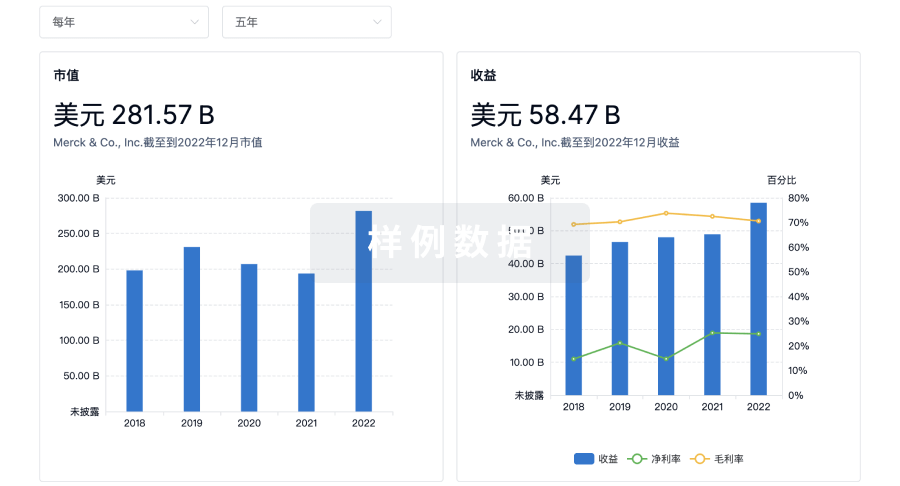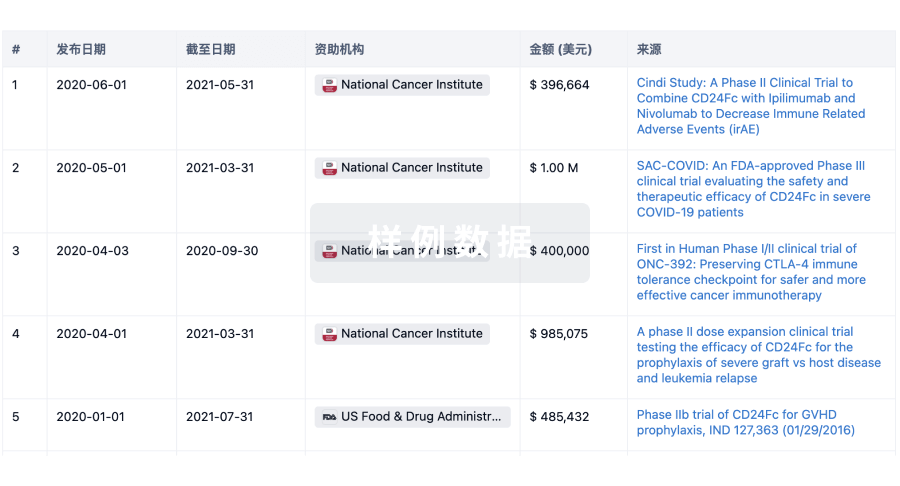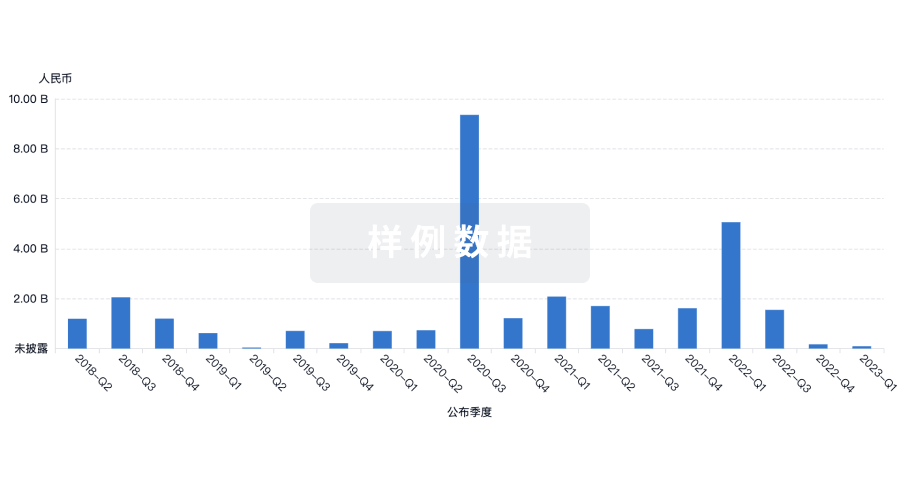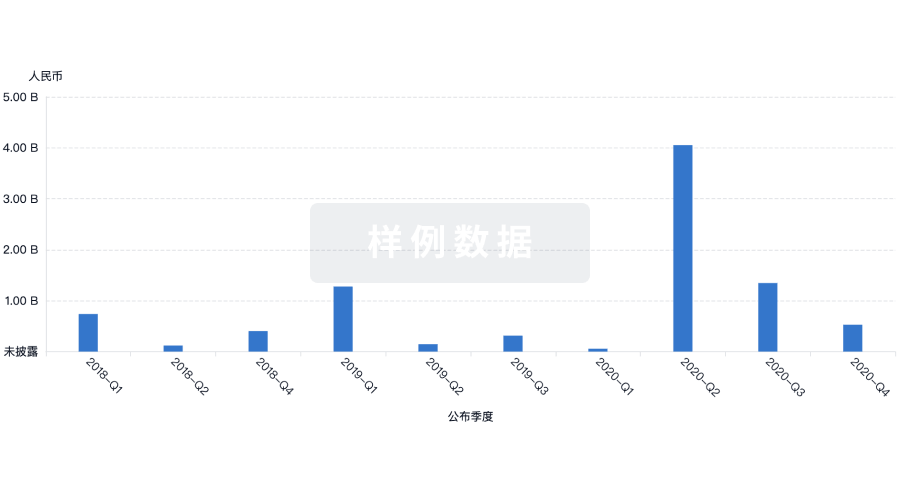预约演示
更新于:2025-08-17

AstraZeneca PLC
更新于:2025-08-17
概览
标签
肿瘤
呼吸系统疾病
泌尿生殖系统疾病
小分子化药
单克隆抗体
ADC
疾病领域得分
一眼洞穿机构专注的疾病领域
暂无数据
技术平台
公司药物应用最多的技术
暂无数据
靶点
公司最常开发的靶点
暂无数据
| 排名前五的药物类型 | 数量 |
|---|---|
| 小分子化药 | 239 |
| 单克隆抗体 | 61 |
| ADC | 26 |
| 合成多肽 | 18 |
| 预防性疫苗 | 14 |
关联
499
项与 AstraZeneca PLC 相关的药物作用机制 TOP1抑制剂 [+1] |
在研机构 |
在研适应症 |
非在研适应症 |
最高研发阶段批准上市 |
首次获批国家/地区 日本 |
首次获批日期2024-12-27 |
作用机制 SARS-CoV-2 S protein抑制剂 |
在研机构 |
原研机构 |
在研适应症 |
非在研适应症- |
最高研发阶段批准上市 |
首次获批国家/地区 日本 |
首次获批日期2024-12-27 |
靶点 |
作用机制 TTR调节剂 |
在研适应症 |
非在研适应症 |
最高研发阶段批准上市 |
首次获批国家/地区 美国 |
首次获批日期2024-11-22 |
5,886
项与 AstraZeneca PLC 相关的临床试验NCT07049653
A Non-Interventional Multi-Database Post-Authorisation Study to Assess Pregnancy-Related Safety Data From Women With SLE Exposed to Anifrolumab
This is a non-interventional multi-database post-authorisation study to assess pregnancy-related safety data from women with SLE exposed to Anifrolumab.
开始日期2026-01-31 |
申办/合作机构 |
NCT06927648
CAPIVASERTIB REGULATORY POSTMARKETING SURVEILLANCE IN KOREA
To fulfil the post-approval commitment of MFDS to conduct post-marketing surveillance, this study is designed to assess the known safety profile, identify previously unsuspected adverse reactions and to evaluate the effectiveness of Capivasertib under conditions of routine daily medical practice in Korea.
开始日期2025-12-31 |
申办/合作机构 |
NCT05403723
A Phase 1b Trial of Adaptive Stereotactic Body Radiotherapy in Combination With Durvalumab (MEDI4736), Platinum, and Etoposide in Extensive Stage Small Cell Lung Cancer
This is trial studying the safety of adaptive stereotactic body radiotherapy (SBRT) combined with durvalumab immunotherapy, platinum chemotherapy, and etoposide chemotherapy in platinum refractory extensive stage small cell lung cancer (SCLC).
开始日期2025-12-31 |
申办/合作机构 |
100 项与 AstraZeneca PLC 相关的临床结果
登录后查看更多信息
0 项与 AstraZeneca PLC 相关的专利(医药)
登录后查看更多信息
12,460
项与 AstraZeneca PLC 相关的文献(医药)2025-12-31·Human Vaccines & Immunotherapeutics
Exploring nurses’ experiences with a school-located influenza vaccination program: A qualitative study in the region of Murcia, Spain
Article
作者: Perez Martin, Jaime ; Robles Mañueco, Marta ; Martínez Ruiz, Marina ; Zornoza Moreno, Matilde
A cross-sectional qualitative pilot study was designed to assess the nurses' perspectives regarding a school-located influenza vaccination pilot program. The program was developed during the 2022-2023 season in the Region of Murcia (an autonomous community of Spain) targeting the 3- to 4-year population in 24 public schools, using the intranasal Fluenz® Tetra vaccine. School nurses unanimously recognized their professional role not only in administering the vaccine, but also in the development and implementation of general aspects of the pilot program and reported that the experience was very positive. Nursing professionals should be fully involved in providing information to parents about the main aspects of influenza infection and benefits of having their children vaccinated against seasonal influenza. Nurses also advocated that the flu vaccination for children should begin at the same time as vaccination for adults, with vaccination planning completely integrated into the school schedule.Practice implications: The study results could guide healthcare authorities in facilitating the implementation of school-located influenza vaccination programs and increase immunization of preschool children against flu.
2025-10-01·Multiple Sclerosis and Related Disorders
ACT with NMOSD: A targeted, telehealth-delivered mental health intervention for patients & caregivers
Article
作者: Nurse, Chelsi N ; Wakschal, Emily ; Peppers, Charles L ; Deshpande, Ankita ; Esiason, Darcy C ; Erler, Wendy ; Andrews, Leigh ; Levy, Michael ; Hattrich, Tom ; O'Hayer, C Virginia ; Bruschwein, Heather ; Leist, Thomas ; Kushner, Hallie M ; Smith, Patrick J ; Drescher, Christopher F
PURPOSE:
The rare, unpredictable, debilitating nature of neuromyelitis optica spectrum disorder (NMOSD) constitutes a unique psychological burden. This single-arm, pilot clinical trial examined the effectiveness of Acceptance and Commitment Therapy (ACT) tailored to meet the psychological burden of NMOSD, a brief telehealth-delivered intervention, targeting this burden.
METHODS:
Forty-three adults with NMOSD (76 % aquaporin-4 seropositive (AQP4+)) in USA, with elevated anxiety and/or depression completed 6-weeks of an experiential talk therapy designed to increase psychological flexibility and valued action, specifically tailored to address the psychological burden of NMOSD: Acceptance and Commitment Therapy (ACT) w NMOSD. Patients attended via Zoom, along with 22 caregivers, providing baseline, posttreatment, and follow-up measures of depression, anxiety, cognitive fusion, psychological flexibility, valued living, disability, sleep, fatigue, and pain. Linear mixed effect models examined changes in repeated measures of all outcomes, controlling for age, sex, disability, AQP4 serostatus.
RESULTS:
Participants were mostly female (84 %) and Caucasian (56 %), with baseline mild depression (mean 15.4 [SD = 8.7]) and moderate anxiety (mean = 13.5 [SD = 9.3]). Most participants (93 %) completed all treatment sessions and study assessments. Pre-to-post treatment analysis showed clinically meaningful reductions in depression (15.4 (12.8, 19.0) to 11.1 (8.3, 13.8) P<.001;) and anxiety (13.5 (11.2, 15.7) to 10.0 (7.5, 12.4) P ≤.005). Parallel improvements in cognitive fusion (39.6 (35.6, 43.6) to 33.7 (29.6, 37.7) P<.001), psychological acceptance (20.0 (17.3, 22.8) to 17.0 (14.2, 19.8) P < 0.002), valued living (49.2 (43.2, 55.3) to 60.5 (54.4, 66.6) P<.001), and sleep quality (10.1 (9.0, 11.2) to 8.3 (7.1, 9.5), P<.001) support the overall benefit of ACT to mental health. Improvements remained at 3-month follow-up. Disability status, pain, fatigue, were unchanged, as expected.
CONCLUSIONS:
ACT with NMOSD is a promising innovative targeted mental health intervention for adults with NMOSD with lasting benefits.
CLINICALTRIALS:
gov ID # NCT05840055 Supported by Alexion Pharmaceuticals.
2025-08-01·Journal of Allergy and Clinical Immunology-In Practice
Impact of Biologics Initiation on Oral Corticosteroid Use in the International Severe Asthma Registry and the Optimum Patient Care Research Database: A Pooled Analysis of Real-World Data
Article
BACKGROUND:
For severe asthma (SA) management, real-world evidence on the effects of biologic therapies in reducing the burden of oral corticosteroid (OCS) use is limited.
OBJECTIVE:
To estimate the efficacy of biologic initiation on total OCS (TOCS) exposure in patients with SA from real-world specialist and primary care settings.
METHODS:
From the International Severe Asthma Registry (ISAR, specialist care) and the Optimum Patient Care Research Database (OPCRD, primary care, United Kingdom), adult biologic initiators were identified and propensity score-matched with non-initiators (ISAR, 1:1; OPCRD, 1:2). The impact of biologic initiation on TOCS (including bursts for exacerbations) daily dose in the first- and second-year follow-up period was estimated using multivariable generalized linear models.
RESULTS:
Among 5,663 patients (ISAR 48%, OPCRD 52%), the odds ratios (ORs) of biologic initiators achieving TOCS cessation in the first and second years of follow-up were 2.38 (95% CI, 1.87-3.04) and 2.11 (95% CI, 1.65-2.70), whereas the ORs of low (0- to 5-mg) TOCS intake were 1.62 (95% CI, 1.40-1.86) and 1.40 (95% CI, 1.21-1.61), respectively. Compared with non-initiators, biologic initiators had a substantially higher chance of achieving greater than 75% reduction from baseline (OR [95% CI] = 2.35 [2.06-2.68] and 1.53 [1.35-1.73] in first and second years, respectively). These findings remained persistent and robust when analyses were repeated with one country setting removed at a time.
CONCLUSIONS:
Biologic initiation in patients with SA led to substantial reduction in TOCS exposure, particularly in the first year. Future analyses will explore the impact on OCS-related adverse health events.
20,898
项与 AstraZeneca PLC 相关的新闻(医药)2025-08-17
·信狐药迅
每周药品注册获批数据,分门别类呈现,一目了然。(8.11-8.17)
新药上市申请
无
新药临床申请
药品名称
企业
注册分类
受理号
QLH12016胶囊
齐鲁制药有限公司
1
CXHL2500548
QLH12016胶囊
齐鲁制药有限公司
1
CXHL2500547
HSK47977片
海思科医药集团股份有限公司
1
CXHL2500545
HSK47977片
海思科医药集团股份有限公司
1
CXHL2500544
HKG-456
海南元盈医药科技有限公司
2.2
CXHL2500505
鼻喷重组呼吸道合胞病毒疫苗(5型副流感病毒载体)
广州思安信生物技术有限公司
1.1
CXSL2500430
重组呼吸道合胞病毒疫苗(CHO细胞)(佐剂)
江苏中慧元通生物科技股份有限公司
1.2
CXSL2500429
24价肺炎球菌结合疫苗
苏州聚微生物科技有限公司
1.4
CXSL2500410
三价流感病毒裂解疫苗(MDCK细胞)
兰州百灵生物技术有限公司
2.2
CXSL2500428
重组人PD-L1/CD3 双抗溶瘤II型单纯疱疹病毒注射液(Vero细胞)
武汉滨会生物科技股份有限公司
1
CXSL2500425
注射用RMMV疫苗
长春康悦生物科技有限公司
1
CXSL2500423
SNUG01
神济昌华(北京)生物科技有限公司
1
CXSL2500415
宫血间充质干细胞注射液
浙江生创精准医疗科技有限公司
1
CXSL2500412
人牙囊间充质干细胞注射液
成都世联康健生物科技有限公司
1
CXSL2500408
GC012F注射液
亘喜生物科技(上海)有限公司
1
CXSL2500399
仿制药申请
药品名称
企业
注册分类
受理号
卡麦角林片
长春金赛药业有限责任公司
3
CYHL2500098
茚达特罗格隆溴铵吸入粉雾剂
四川普锐特药业有限公司
4
CYHL2500096
冻干b型流感嗜血杆菌结合疫苗
华兰生物疫苗股份有限公司
3.3
CXSL2500411
SAL023注射液
信立泰(苏州)药业有限公司
3.3
CXSL2500445
硫酸氨基葡萄糖氯化钠复盐
珠海润都制药股份有限公司
原料药
CYHS2460151
富马酸伏诺拉生
天方药业有限公司
原料药
CYHS2460031
进口申请
药品名称
企业
注册分类
受理号
JSB462片
Novartis Pharma AG
1
JXHL2500129
JSB462片
Novartis Pharma AG
1
JXHL2500128
镥(177Lu)vipivotide tetraxetan注射液
Novartis Pharma AG
2.4
JXHL2500127
用于制备放射性药物镓(68Ga)gozetotide注射液的药盒
Novartis Europharm Limited
5.1
JXHL2500126
中药相关申请
药品名称
企业
注册分类
受理号
健脾疏肝固本颗粒
江苏康缘药业股份有限公司
1.1
CXZL2500032
鼻渊通窍颗粒
健民药业集团股份有限公司
4
CYZL2500001
注:橙色字体部分结论为不批准或收到通知件;
疫苗临床申请
2025-08-17
·信狐药迅
本周药品注册受理数据,分门别类呈现,一目了然。(8.11-8.17)
新药上市申请
药品名称
企业
注册分类
受理号
HY22017胶囊
长春海悦药业股份有限公司
2.3
CXHS2500095
海曲泊帕乙醇胺片
江苏恒瑞医药股份有限公司
2.4
CXHS2500094
海曲泊帕乙醇胺片
江苏恒瑞医药股份有限公司
2.4
CXHS2500093
海曲泊帕乙醇胺片
江苏恒瑞医药股份有限公司
2.4
CXHS2500092
新药临床申请
药品名称
企业
注册分类
受理号
MAX-001胶囊
安炎达医药技术(广州)有限公司
1
CXHL2500859
MAX-001胶囊
安炎达医药技术(广州)有限公司
1
CXHL2500858
HSK39297片
海思科医药集团股份有限公司
1
CXHL2500855
HSK39297片
海思科医药集团股份有限公司
1
CXHL2500854
HSK39297片
海思科医药集团股份有限公司
1
CXHL2500853
HSK39297片
海思科医药集团股份有限公司
1
CXHL2500852
TGRX-678片
深圳市塔吉瑞生物医药有限公司
1
CXHL2500850
D-2570片
益方生物科技(上海)股份有限公司
1
CXHL2500849
HRS-6209胶囊
江苏恒瑞医药股份有限公司
1
CXHL2500848
HRS-6209胶囊
江苏恒瑞医药股份有限公司
1
CXHL2500847
HRS-6209胶囊
江苏恒瑞医药股份有限公司
1
CXHL2500846
HRS-6209胶囊
江苏恒瑞医药股份有限公司
1
CXHL2500845
HRS-2189片
山东盛迪医药有限公司
1
CXHL2500844
HRS-2189片
山东盛迪医药有限公司
1
CXHL2500843
ARTS-023片
安锐生物医药科技(广州)有限公司
1
CXHL2500835
ARTS-023片
安锐生物医药科技(广州)有限公司
1
CXHL2500834
XZ022
山东新时代药业有限公司
2.2
CXHL2500860
紫杉醇软胶囊
美济生物医药(广州)有限公司
2.2
CXHL2500839
HWH217片
湖北生物医药产业技术研究院有限公司
2.3
CXHL2500857
HWH217片
湖北生物医药产业技术研究院有限公司
2.3
CXHL2500856
注射用戈舍瑞林微球
山东绿叶制药有限公司
2.4
CXHL2500851
阿贝西利片
齐鲁制药有限公司
2.4
CXHL2500840
阿贝西利片
齐鲁制药有限公司
2.4
CXHL2500842
阿贝西利片
齐鲁制药有限公司
2.4
CXHL2500841
结合雌激素乳膏
新疆新姿源生物制药有限责任公司
2.4
CXHL2500833
吡非尼酮胶囊
北京康蒂尼药业股份有限公司
2.4
CXHL2500836
PRT-062鼻喷雾剂
四川普锐特药业有限公司
2.4;2.2
CXHL2500838
PRT-062鼻喷雾剂
四川普锐特药业有限公司
2.4;2.2
CXHL2500837
重组呼吸道合胞病毒疫苗(CHO细胞)
北京华诺泰生物医药科技有限公司
1.2
CXSL2500691
吸附无细胞百白破(组分)联合疫苗(成人及青少年用)
北京智飞绿竹生物制药有限公司
2.6
CXSL2500705
SHR-1139注射液
广东恒瑞医药有限公司
1
CXSL2500704
注射用乙型脑炎溶瘤病毒
四川安可康生物医药有限公司
1
CXSL2500709
注射用乙型脑炎溶瘤病毒
四川安可康生物医药有限公司
1
CXSL2500708
注射用乙型脑炎溶瘤病毒
四川安可康生物医药有限公司
1
CXSL2500707
注射用乙型脑炎溶瘤病毒
四川安可康生物医药有限公司
1
CXSL2500706
ZX2021注射液
江苏中新医药有限公司
1
CXSL2500699
ZX2021注射液
江苏中新医药有限公司
1
CXSL2500698
ZX2021注射液
江苏中新医药有限公司
1
CXSL2500697
ZX2021注射液
江苏中新医药有限公司
1
CXSL2500696
ZX2021注射液
江苏中新医药有限公司
1
CXSL2500695
GenSci098注射液
长春金赛药业有限责任公司
1
CXSL2500703
Cizutamig注射液
上海坦蒂生物医药科技有限公司
1
CXSL2500702
注射用YP004
原菩生物技术(武汉)有限责任公司
1
CXSL2500701
VBC101
上海橙帆医药有限公司
1
CXSL2500700
AZD0901
阿斯利康全球研发(中国)有限公司
1
CXSL2500694
注射用QLC5513
齐鲁制药有限公司
1
CXSL2500690
仿制药申请
药品名称
企业
注册分类
受理号
盐酸卡替洛尔滴眼液
成都地奥九泓制药厂
3
CYHS2503016
洛索洛芬钠颗粒
辽宁海一制药有限公司
3
CYHS2503013
联苯苄唑溶液
中山万汉制药有限公司
3
CYHS2503009
盐酸多巴酚丁胺注射液
石家庄四药有限公司
3
CYHS2503006
联苯苄唑溶液
杭州上禾健康科技有限公司
3
CYHS2503005
盐酸西替利嗪口服溶液
海南万玮制药有限公司
3
CYHS2503004
布比卡因脂质体注射液
浙江博崤生物制药有限公司
3
CYHS2503003
布比卡因脂质体注射液
浙江博崤生物制药有限公司
3
CYHS2503002
氨磺必利口服溶液
河北义海医药科技有限公司
3
CYHS2503000
枸橼酸西地那非口溶膜
杭州和泽坤元药业有限公司
3
CYHS2502996
JP-1366片
丽珠医药集团股份有限公司
3
CYHS2502991
聚乙二醇4000散
西安安健药业有限公司
3
CYHS2502988
普瑞巴林口服溶液
江苏贝佳制药有限公司
3
CYHS2502986
普瑞巴林口服溶液
江苏贝佳制药有限公司
3
CYHS2502983
叶酸片
成都通德药业有限公司
3
CYHS2502973
枸橼酸苯海拉明布洛芬片
合肥恩瑞特药业有限公司
3
CYHS2502972
盐酸多西环素片
江苏润恒制药有限公司
3
CYHS2502969
盐酸多西环素片
江苏润恒制药有限公司
3
CYHS2502968
瑞舒伐他汀钙口崩片
广东万泰科创药业有限公司
3
CYHS2502966
瑞舒伐他汀钙口崩片
广东万泰科创药业有限公司
3
CYHS2502965
注射用硫酸多黏菌素B
国药集团国瑞药业有限公司
3
CYHS2502963
叶酸片
建昌帮药业有限公司
3
CYHS2502979
复方聚乙二醇(3350)电解质口服溶液
湖北午时药业股份有限公司
3
CYHS2502957
中性腹膜透析液(碳酸氢盐-G1.5%)
成都青山利康药业股份有限公司
3
CYHS2502955
中性腹膜透析液(碳酸氢盐-G1.5%)
成都青山利康药业股份有限公司
3
CYHS2502954
中性腹膜透析液(碳酸氢盐-G1.5%)
成都青山利康药业股份有限公司
3
CYHS2502953
中性腹膜透析液(碳酸氢盐-G2.5%)
成都青山利康药业股份有限公司
3
CYHS2502952
中性腹膜透析液(碳酸氢盐-G2.5%)
成都青山利康药业股份有限公司
3
CYHS2502951
中性腹膜透析液(碳酸氢盐-G2.5%)
成都青山利康药业股份有限公司
3
CYHS2502950
复方磷酸盐颗粒
江苏润恒制药有限公司
3
CYHS2502947
草酸艾司西酞普兰口服溶液
浙江领创优品药业有限公司
3
CYHS2502944
维生素B12注射液
江苏润恒制药有限公司
3
CYHS2502943
中性低钙腹膜透析液(碳酸氢盐-G2.5%)
成都青山利康药业股份有限公司
3
CYHS2502930
中性低钙腹膜透析液(碳酸氢盐-G2.5%)
成都青山利康药业股份有限公司
3
CYHS2502929
中性低钙腹膜透析液(碳酸氢盐-G2.5%)
成都青山利康药业股份有限公司
3
CYHS2502928
磷/碳酸氢钠血滤置换液(4mmol/L钾、1.25mmol/L钙)
宁波天益药业科技有限公司
3
CYHS2502922
帕拉米韦注射液
哈尔滨三联药业股份有限公司
3
CYHS2502916
色甘酸钠滴眼液
苏州乐珠制药有限公司
3
CYHS2502936
帕拉米韦氯化钠注射液
哈尔滨三联药业股份有限公司
4
CYHS2503015
帕拉米韦氯化钠注射液
哈尔滨三联药业股份有限公司
4
CYHS2503014
注射用磷酸特地唑胺
安徽省先锋制药有限公司
4
CYHS2503008
阿达帕林凝胶
东阳祥昇医药科技有限公司
4
CYHS2503007
盐酸曲唑酮缓释片
合肥力成药业有限公司
4
CYHS2503001
双氯芬酸钠盐酸利多卡因注射液
四川健林药业有限责任公司
4
CYHS2502999
阿法骨化醇滴剂
石家庄科仁医药科技有限公司
4
CYHS2502998
聚乙烯醇滴眼液
北京汇恩兰德制药有限公司
4
CYHS2502981
氧(液态)
准格尔旗鼎承气体有限责任公司
4
CYHS2502980
蒙脱石混悬液
浙江百代医药科技有限公司
4
CYHS2502997
左氧氟沙星氯化钠注射液
四川太平洋药业有限责任公司
4
CYHS2502995
洛索洛芬钠贴剂
苏州弘森药业股份有限公司
4
CYHS2502994
洛索洛芬钠贴剂
苏州弘森药业股份有限公司
4
CYHS2502993
骨化三醇软胶囊
江苏万高药业股份有限公司
4
CYHS2502992
聚乙二醇4000散
西安安健药业有限公司
4
CYHS2502990
瑞舒伐他汀依折麦布片(I)
山东新华制药股份有限公司
4
CYHS2502989
氟轻松玻璃体内植入剂
苏州欧康维视生物科技有限公司
4
CYHS2502987
乳果糖口服溶液
浙江震元制药有限公司
4
CYHS2502985
乳果糖口服溶液
浙江震元制药有限公司
4
CYHS2502984
乳果糖口服溶液
浙江震元制药有限公司
4
CYHS2502982
磷酸芦可替尼片
齐鲁制药有限公司
4
CYHS2503012
磷酸芦可替尼片
齐鲁制药有限公司
4
CYHS2503010
磷酸芦可替尼片
齐鲁制药有限公司
4
CYHS2503011
甲磺酸沙非胺片
扬子江药业集团有限公司
4
CYHS2502946
碘佛醇注射液
福安药业集团宁波天衡制药有限公司
4
CYHS2502971
灌注用盐酸氨酮戊酸己酯
江苏联环药业股份有限公司
4
CYHS2502970
伏立康唑干混悬剂
河北嵘霖制药有限公司
4
CYHS2502967
泊那替尼片
成都硕德药业有限公司
4
CYHS2502964
盐酸曲唑酮缓释片
中曦(福建)药业有限公司
4
CYHS2502978
盐酸曲唑酮缓释片
中曦(福建)药业有限公司
4
CYHS2502977
沙库巴曲缬沙坦钠片
江西施美药业股份有限公司
4
CYHS2502976
沙库巴曲缬沙坦钠片
江西施美药业股份有限公司
4
CYHS2502975
沙库巴曲缬沙坦钠片
江西施美药业股份有限公司
4
CYHS2502974
甲磺酸沙非胺片
扬子江药业集团有限公司
4
CYHS2502945
塞来昔布胶囊
吉林亚泰永安堂药业有限公司
4
CYHS2502959
塞来昔布胶囊
吉林亚泰永安堂药业有限公司
4
CYHS2502958
达格列净片
青岛百洋制药有限公司
4
CYHS2502956
美阿沙坦钾片
福建东瑞制药有限公司
4
CYHS2502949
美阿沙坦钾片
福建东瑞制药有限公司
4
CYHS2502948
卡铂注射液
南京泽恒医药技术开发有限公司
4
CYHS2502942
替普瑞酮胶囊
广东迈德珐医药科技有限公司
4
CYHS2502941
巴瑞替尼片
江苏万高药业股份有限公司
4
CYHS2502940
巴瑞替尼片
江苏万高药业股份有限公司
4
CYHS2502939
瑞维那新吸入溶液
复星医药(徐州)有限公司
4
CYHS2502938
瑞维那新吸入溶液
遂成药业股份有限公司
4
CYHS2502937
艾普拉唑肠溶片
广东君康药业有限公司
4
CYHS2502961
沙库巴曲缬沙坦钠片
国药集团致君(深圳)坪山制药有限公司
4
CYHS2502960
巴瑞替尼片
浙江华海药业股份有限公司
4
CYHS2502962
阿达帕林凝胶
河北三禾实创生物科技有限公司
4
CYHS2502934
甲钴胺片
天津柏海药业有限责任公司
4
CYHS2502933
盐酸伐昔洛韦片
浙江浙北药业有限公司
4
CYHS2502932
非奈利酮片
重庆莱美药业股份有限公司
4
CYHS2502931
苯磺酸左氨氯地平片
山西汾河制药有限公司
4
CYHS2502927
苯磺酸左氨氯地平片
山西汾河制药有限公司
4
CYHS2502926
非诺贝特片(III)
深圳格莱恩生物医药科技有限公司
4
CYHS2502925
乙酰半胱氨酸颗粒
武汉远大弘元股份有限公司
4
CYHS2502924
溴芬酸钠滴眼液
盈科瑞(珠海金湾)制药有限公司
4
CYHS2502923
注射用氨苄西林钠舒巴坦钠
山东安信制药有限公司
4
CYHS2502921
注射用氨苄西林钠舒巴坦钠
山东安信制药有限公司
4
CYHS2502920
注射用氨苄西林钠舒巴坦钠
山东安信制药有限公司
4
CYHS2502919
门冬氨酸钾镁注射液
裕松源药业有限公司
4
CYHS2502918
洛索洛芬钠凝胶贴膏
浙江恒研医药科技有限公司
4
CYHS2502917
蒙脱石散
重庆康刻尔制药股份有限公司
4
CYHS2502935
注射用硫酸艾沙康唑
石药集团欧意药业有限公司
4
CYHS2502915
沙库巴曲缬沙坦钠片
苏州第三制药厂有限责任公司
4
CYHS2502914
沙库巴曲缬沙坦钠片
苏州第三制药厂有限责任公司
4
CYHS2502913
奥利司他胶囊
湖南本草制药有限责任公司
4
CYHS2502912
奥利司他胶囊
湖南本草制药有限责任公司
4
CYHS2502911
乙酰半胱氨酸注射液
重庆康刻尔制药股份有限公司
4
CYHS2502910
达格列净二甲双胍缓释片(III)
重庆博腾药业有限公司
4
CYHS2502909
达格列净二甲双胍缓释片(II)
重庆博腾药业有限公司
4
CYHS2502908
达格列净二甲双胍缓释片(I)
重庆博腾药业有限公司
4
CYHS2502907
低钙腹膜透析液(乳酸盐-G4.25%)
辰欣药业股份有限公司
4
CYHS2502906
贝伐珠单抗眼内注射液
珠海亿胜生物制药有限公司
3.2
CXSS2500082
司美格鲁肽注射液
惠升生物制药股份有限公司
3.3
CXSS2500084
司美格鲁肽注射液
惠升生物制药股份有限公司
3.3
CXSS2500083
瑞卢戈利片
山东朗诺制药有限公司
3
CYHL2500147
异硫蓝注射液
康哲(湖南)制药有限公司
3
CYHL2500146
盐酸羟甲唑啉滴眼液
北京汇恩兰德制药有限公司
3
CYHL2500145
甲磺酸酚妥拉明滴眼液
浙江视方极医药科技有限公司
3
CYHL2500143
呫诺美林曲司氯铵胶囊
江苏恩华药业股份有限公司
3
CYHL2500142
呫诺美林曲司氯铵胶囊
江苏恩华药业股份有限公司
3
CYHL2500141
呫诺美林曲司氯铵胶囊
江苏恩华药业股份有限公司
3
CYHL2500140
茚达特罗格隆溴铵吸入粉雾剂
山东京卫制药有限公司
4
CYHL2500144
冻干人用狂犬病疫苗(人二倍体细胞)
成都康华生物制品股份有限公司
3.3
CXSL2500692
QL2302注射液
齐鲁制药有限公司
3.3
CXSL2500693
进口申请
药品名称
企业
注册分类
受理号
塞普替尼片
Eli Lilly Nederland B.V.
5.1
JXHS2500087
塞普替尼片
Eli Lilly Nederland B.V.
5.1
JXHS2500086
塞普替尼片
Eli Lilly Nederland B.V.
5.1
JXHS2500085
塞普替尼片
Eli Lilly Nederland B.V.
5.1
JXHS2500084
艾沙妥昔单抗注射液(皮下注射)
Sanofi Winthrop Industrie
2.1
JXSS2500108
乙磺酸LY4066434片
Eli Lilly and Company
1
JXHL2500216
乙磺酸LY4066434片
Eli Lilly and Company
1
JXHL2500215
乙磺酸LY4066434片
Eli Lilly and Company
1
JXHL2500214
Icotrokinra片
Janssen Research & Development, LLC
1
JXHL2500213
Rilzabrutinib片
Sanofi-Aventis Recherche & Developpement
2.4
JXHL2500217
马立巴韦干混悬剂
Takeda Pharmaceuticals U.S.A., Inc.
2.4;2.2
JXHL2500212
马立巴韦干混悬剂
Takeda Pharmaceuticals U.S.A., Inc.
2.4;2.2
JXHL2500211
AZD0486
AstraZeneca AB
1
JXSL2500154
AZD0486
AstraZeneca AB
1
JXSL2500153
AZD0486
AstraZeneca AB
1
JXSL2500152
AZD0486
AstraZeneca AB
1
JXSL2500151
AZD0486
AstraZeneca AB
1
JXSL2500150
BCD-261注射液
SPH-BIOCAD (HK) LIMITED
1
JXSL2500149
MEDI5752
AstraZeneca AB
1
JXSL2500148
Lunsekimig注射液
Sanofi-Aventis Recherche & Developpement
1
JXSL2500146
Lunsekimig注射液
Sanofi-Aventis Recherche & Developpement
1
JXSL2500145
注射用SAR446523
Sanofi-Aventis Recherche & Developpement
1
JXSL2500144
注射用替奈普酶
Boehringer Ingelheim International GmbH
2.2
JXSL2500155
DS-1062a
AstraZeneca AB
2.2
JXSL2500147
中药相关申请
药品名称
企业
注册分类
受理号
小儿胆青双解颗粒
海南葫芦娃药业集团股份有限公司
1.1
CXZL2500065
苏黄止咳胶囊
杨凌科森生物制药有限责任公司
4
CYZS2500009
注:绿色字体部分为潜在首仿品种;
不包含原料药、医用氧、注射用水、氯化钠或葡萄糖注射液等申请,不包含再注册、一次性进口、技术转移、复审申请。
申请上市疫苗
2025-08-15
经历完上周几家头部Biotech股价暴跌,本周,政策面与资本面共振放大创新药热度。
国家医保局公示商保创新药目录初审名单,今年医保谈判序幕拉开。二级市场方面,GLP-1新股银诺医药登陆港交所首日大涨;百洋医药战投北海康成。
研发与注册捷报频传:荣昌泰它西普干燥综合征Ⅲ期成功,复宏汉霖HLX04-O眼科适应证获NDA受理,恒瑞全新ADC获批临床;正大天晴PD-1/TGF-β融合蛋白启动Ⅲ期,百济更新多项里程碑时间表。
BD也依旧活跃:礼来携手Superluminal推进AI+减重新药,复星DPP-1抑制剂出海授权。
本周,还有哪些大事值得关注?
政策动态
商保创新药目录初审名单公布:8月12日,国家医保局公示了通过2025年国家基本医疗保险、生育保险和工伤保险药品目录及商保创新药目录调整初步形式审查的药品及相关信息。国家医保局共收到商保创新药目录申报信息141份,涉及药品通用名141个,经初步审核,121个药品通用名通过形式审查。其中商保创新药目录通过初步形式审查的目录外产品中,有79款同时通过了基本目录和商保目录的形式审查,包括12款单抗、3款CAR-T疗法、1款ADC、1款双抗、2款中成药等。
相关阅读:商保创新药目录首开,CAR-T/ADC/双抗集结!新药进院“二次议价”困局,能解吗?
国家医保局印发《医疗保障按病种付费管理暂行办法》:《办法》对按病种付费有关政策、关键技术、核心要素、配套措施等进行了明确。《办法》突出了三个方面的规范:规范总额预算管理,要求合理编制支出预算,在此基础上确定按病种付费总额,强调总额预算的刚性。规范分组方案制定和调整。明确分组方案的制定主体、分组框架、数据和意见支撑、调整内容等,原则上要求分组方案两年调整一次。规范核心要素和配套措施。厘清了权重、费率、支付标准等内涵,要求核心要素确定中医保部门要与医疗机构充分协商,达成一致。规范医保支付相关的配套措施,包括特例单议、预付金、意见收集、谈判协商和医保数据发布等,提高医保支付的科学水平。《办法》还明确将按病种付费相关要求纳入协议管理,加强改革成效监测评估,强化基金监管,完善医保信息平台建设等,提升按病种付费的标准化水平。
《医疗广告认定指南》发布:8月13日,市场监管总局、国家卫生健康委、国家中医药局联合发布《医疗广告认定指南》,旨在维护医疗广告市场秩序,切实保障人民群众就医知情权以及广大消费者合法权益。《指南》明确,医疗广告是指利用一定的媒介和形式直接或者间接介绍医疗机构或者医疗服务的广告。除依法设立的医疗机构外,任何单位和个人不得自行或者委托他人发布医疗广告。《指南》解读指出,由于表现形式较为相似,医疗广告、医疗信息和医疗科普在广告监管实践中难以被有效区分。这一方面给医疗机构开展正常的医疗信息公开和面向公众的医疗科普造成了困扰,另一方面给不法之徒借助信息公开和医疗科普形式变相发布违法违规医疗广告提供了可乘之机。
山西省医保局发布“集采三进”通知:7月25日,山西省医保局发出该省“集采三进”的通知,决定在全省范围开展集采药品“进基层医疗机构、进民营医疗机构、进零售药店”(集采三进)。明确参与医药机构可从各市“三进”集采药品清单自主遴选集采药品。实际配备集采药品品种数量达到要求,其中,零售药店达到50种,民营综合型三级医疗机构配备集采药品数量达到80种、其他民营医疗机构达到50种。按通知显示,2025年9月底前,各市结合实际参照制定本地区具体实施方案,组织遴选本市“三进”集采药品清单,并确定首批参加集采药品“三进”工作的医药机构。本次集采药品“三进”行动以各统筹区为单位具体组织实施。
大型制药
恒瑞ADC新药获批临床:8月13日,恒瑞医药宣布,其自主研发Nectin-4 ADC创新药SHR-A2102联合治疗头颈鳞癌获批临床。据悉,SHR-A2102为恒瑞医药自主研发且具有知识产权的靶向Nectin-4的抗体药物偶联物(ADC),其有效载荷是拓扑异构酶抑制剂(TOP1i)。SHR-A2102正在中国进行多项临床试验,涵盖尿路上皮癌、食管癌、非小细胞肺癌、晚期妇科恶性肿瘤、晚期实体瘤等多项适应证。值得一提的是,近期恒瑞还正式成立全新的生物制药事业部(BBU)。
礼来13亿美元合作AI+减重新药研发:8月14日,礼来宣布与美国AI制药公司Superluminal签署价值13亿美元的交易,以加速AI药物研发,尤其是开发针对肥胖症及其他心脏代谢性疾病治疗的小分子药物。通过这项交易,礼来将能使用Superluminal的AI驱动的药物发现平台,尤其是针对靶向G蛋白偶联受体(GPCR)药物的研发,此类蛋白可以影响包括代谢、细胞生长和免疫反应在内的生理过程。
复星医药DPP-1抑制剂授权出海:8月11日,复星医药宣布,控股子公司上海复星医药产业发展有限公司与Expedition Therapeutics, Inc.签订《许可协议》,将向Expedition授予小分子口服二肽基肽酶1(DPP-1)抑制剂XH-S004在全球(不包括中国境内及港澳地区)范围的开发、生产及商业化权利。复星医药将保留XH-S004在中国境内及港澳地区的开发、生产及商业化权利。根据协议,Expedition将向复星医药支付至多1.2亿美元不可退还的首付款、开发里程碑付款,未来还将基于XH-S004于许可区域的年度净销售额的达成情况,由Expedition依约支付至多5.25亿美元的销售里程碑款项。
正大天晴PD-1/TGF-β融合蛋白启动III期临床:8月12日,药物临床试验登记与信息公示平台显示,正大天晴的TQB2868启动了首个III期研究。TQB2868是正大天晴自主研发的PD-1/TGF-β双功能融合蛋白,可阻断PD-1/PD-L1通路,并中和肿瘤微环境中的TGF-β,兼具免疫检查点抑制与肿瘤微环境重塑的双重作用。据悉,该药物是全球首个进入III期临床阶段的PD-1/TGF-β双功能融合蛋白。
诺华抗BAFF-R单抗两项III期研究成功:8月11日,诺华宣布Ianalumab(VAY736)治疗活动性干燥综合征的两项III期研究(NEPTUNUS-1和NEPTUNUS-2)取得了积极结果。该药物有望成为干燥综合征领域首个靶向治疗药物。Ianalumab是诺华收购(MorphoSys)获得的一款靶向B淋巴细胞活化因子受体(BAFF-R)的全人源单抗,具有耗竭B细胞和抑制BAFF-R的双重作用机制,可用于治疗干燥综合征、免疫性血小板减少症(ITP)、系统性红斑狼疮(SLE)等多种自免疾病。该药物是首个完成III期研究的抗BAFF-R抗体。
片仔癀连发两条人事调整公告:8月14日,片仔癀连发两条公告,均涉及人事调整。公告称,为完善公司治理结构,经控股股东推荐,总经理黄进明提名,公司宣布聘任何炜为副总经理,魏腾云为总工程师,任期与第七届董事会一致。董事会提名委员会审核认为,两人均符合高管任职资格,无违规记录。与此同时,公司对董事会审计委员会成员进行调整,由张磊(主任委员)、杜守颖、陈蕾组成,替代原班底,以保障委员会职能有效运行。而片仔癀董事及董事会下属审计委员会委员赖文宁提出辞职,赖文宁辞职后不再担任公司的任何职务;监事黄秋敏辞职,辞职后担任公司科技情报中心主任。
东诚药业上半年净利润同比下降20.7%:8月14日晚间,东诚药业披露2025年半年报显示,公司上半年实现营业收入13.84亿元,同比下降2.6%;归属净利润为8865.25万元,同比下降20.7%。其中,核药业务板块销售收入5.03亿元,同比增长0.78%;原料药业务板块销售收入6.11亿元,同比下降7.02%;制剂业务板块销售收入1.82亿元,同比增长1.76%。
生物科技
百济神州预计索托克拉2026年底将获得首个全球批准:8月13日,百济神州发布投资者关系活动记录表公告称,公司近期将完成多项里程碑事件。到2026年底,公司预计索托克拉将获得首个全球批准,BTK CDAC也有望取得关键数据,公司的自主临床团队将推进20多项3期试验,公司预计将取得超过10个项目的概念验证数据读出,以及研究团队将把10多款新分子实体推进至临床阶段。
荣昌生物泰它西普治疗干燥综合征III期研究成功:8月13日,荣昌生物发布公告,全球首创BLyS/APRIL双靶点融合蛋白药物泰它西普(商品名:泰爱 )用于治疗原发性干燥综合征(pSS)的中国III期临床研究,达到方案设计的临床试验主要研究终点。公司将尽快向国家药品监督管理局药品审评中心(CDE)递交上市申请,并择机在国际重大学术会议上公布具体数据。
智翔金泰GR1802注射液启动过敏性鼻炎III期临床试验:智翔金泰8月13日公告,公司近日完成与国家药品监督管理局药品审评中心的会议沟通,将正式启动GR1802注射液过敏性鼻炎适应证III期临床试验。GR1802注射液为公司自主研发的重组全人源抗IL-4Rα单克隆抗体,已获得多个适应证的临床试验批准通知书,除过敏性鼻炎外,其余适应证包括中、重度特应性皮炎、慢性鼻窦炎伴鼻息肉、慢性自发性荨麻疹、哮喘以及儿童/青少年特应性皮炎。GR1802注射液同靶点药物在国内仅有两款获批上市。
全球首个DPP-1抑制剂在美获批:8月12日,Insmed宣布Brensocatib(商品名:Brinsupri)获FDA批准上市,用于治疗12岁及以上儿童和成人非囊性纤维化支气管扩张症患者。这标志着该疾病领域迎来首款靶向治疗药物。Brensocatib是阿斯利康开发的一款口服、可逆、小分子二肽基肽酶1(DPP-1)抑制剂,通过抑制DPP-1阻止嗜中性粒细胞丝氨酸蛋白酶(NSP)活化,进而抑制中性粒细胞介导的炎症反应。2016年10月,Insmed与阿斯利康达成协议,获得Brensocatib的全球独家开发和商业化权益。
复宏汉霖贝伐珠单抗HLX04-O眼科适应证上市申请获受理:8月13日,复宏汉霖宣布,公司与亿胜生物合作开发的重组抗血管内皮生长因子(Vascular endothelial growth factor, VEGF)人源化单克隆抗体注射液HLX04-O用于湿性年龄相关性黄斑变性(wet age-related macular degeneration, wAMD) 的上市注册申请(NDA)获国家药品监督管理局(NMPA)药品审评中心受理。截至目前,中国境内上市的贝伐珠单抗产品暂无wAMD适应证获批。
资本市场
百洋医药战略投资北海康成:8月13日,北海康成发布公告,已与青岛百洋医药股份有限公司达成股份认购协议,百洋医药将以每股1.34港元的价格认购价值约1亿港元的股份。与此同时,北海康成与百洋医药双方通过签订独家商业化服务协议,进一步深化战略协同。根据协议,百洋医药旗下子公司将获得北海康成旗下特定产品在中国大陆、香港及澳门地区的推广权。根据《股份认购协议》条款,北海康成将按每股认购价1.34港元向认购方发行74,971,468 股新股份。认购完成后,该认购股份将约占公司现有已发行股本的17.65%,及经扩大后股本的14.99%。
GLP-1新药公司银诺医药登陆港交所:8月15日,广州银诺医药集团股份有限公司成功于香港联交所主板上市,发行规模约6.83亿港元。中信证券担任联席保荐人、整体协调人、联席全球协调人、联席账簿管理人及联席牵头经办人。银诺医药今日高开超285%。截至下午收盘,银诺医药报每股57.25港元,较发行价上涨206.48%,市值261.53亿港元。
昭衍新药原副董事长左从林拟减持股份:8月13日,昭衍新药发布公告,公司原副董事长左从林(已离任)因自身资金需求,计划根据市场价格情况,自本公告披露之日起3个交易日后即2025年8月19日至2025年8月29日内通过集中竞价或大宗交易的方式减持其所持有公司股份不超过352.45万股,减持比例不超过公司总股本的0.4703%,减持计划实施期间,公司若发生送红股、转增股本、增发新股或配股等股本除权事项的,减持数量将进行相应调整。
一审| 黄佳
二审| 李芳晨
三审| 李静芝
精彩推荐
大事件 | IPO | 融资&BD | 财报季 | 新产品 | 研发日 | 里程碑 | 行业观察 | 政策解读 | 深度案例 | 大咖履新 | 集采&国谈 | 出海 | 高端访谈 | 技术&赛道 | E企谈 | 新药生命周期 | 市值 | 新药上市 | 商业价值 | 医疗器械 | IND
大药企 | 竞争力20强 | 恒瑞 | 石药 | 中生制药 | 齐鲁 | 复星 | 科伦 | 翰森 | 华润 | 国药 | 云南白药 | 天士力 | 华东 | 上药
创新药企 | 创新100强 | 百济 | 信达 | 君实 | 复宏汉霖 | 康方 | 和黄 | 荣昌 | 亚盛|康宁杰瑞|贝达|微芯|再鼎|亚虹
跨国药企|MNC卓越|辉瑞|AZ|诺华|罗氏|BMS|默克|赛诺菲|GSK|武田|礼来|诺和诺德|拜耳
供应链|赛默飞|药明|凯莱英|泰格|思拓凡|康龙化成|博腾|晶泰|龙沙|三星
启思会 | 声音·责任 | 创百汇 | E药经理人理事会 | 微解药直播 | 大国新药 | 营销硬观点 | 投资人去哪儿 | 分析师看赛道 | 药事每周谈 | 中国医药手册
抗体药物偶联物细胞疗法免疫疗法临床3期引进/卖出
100 项与 AstraZeneca PLC 相关的药物交易
登录后查看更多信息
100 项与 AstraZeneca PLC 相关的转化医学
登录后查看更多信息
组织架构
使用我们的机构树数据加速您的研究。
登录
或

管线布局
2025年08月20日管线快照
管线布局中药物为当前组织机构及其子机构作为药物机构进行统计,早期临床1期并入临床1期,临床1/2期并入临床2期,临床2/3期并入临床3期
药物发现
59
171
临床前
临床申请
3
54
临床1期
临床2期
89
38
临床3期
申请上市
3
81
批准上市
其他
812
登录后查看更多信息
当前项目
| 药物(靶点) | 适应症 | 全球最高研发状态 |
|---|---|---|
曲美木单抗 ( CTLA4 ) | 晚期非小细胞肺癌 更多 | 批准上市 |
德曲妥珠单抗 ( HER2 x Top I ) | HER2阳性乳腺癌 更多 | 批准上市 |
替格瑞洛 ( P2Y12 receptor ) | 心肌梗塞 更多 | 批准上市 |
阿可替尼 ( BTK ) | 慢性淋巴细胞白血病 更多 | 批准上市 |
埃索美拉唑镁 ( Proton pump ) | 胃食管反流 更多 | 批准上市 |
登录后查看更多信息
药物交易
使用我们的药物交易数据加速您的研究。
登录
或

转化医学
使用我们的转化医学数据加速您的研究。
登录
或

营收
使用 Synapse 探索超过 36 万个组织的财务状况。
登录
或

科研基金(NIH)
访问超过 200 万项资助和基金信息,以提升您的研究之旅。
登录
或

投资
深入了解从初创企业到成熟企业的最新公司投资动态。
登录
或

融资
发掘融资趋势以验证和推进您的投资机会。
登录
或

Eureka LS:
全新生物医药AI Agent 覆盖科研全链路,让突破性发现快人一步
立即开始免费试用!
智慧芽新药情报库是智慧芽专为生命科学人士构建的基于AI的创新药情报平台,助您全方位提升您的研发与决策效率。
立即开始数据试用!
智慧芽新药库数据也通过智慧芽数据服务平台,以API或者数据包形式对外开放,助您更加充分利用智慧芽新药情报信息。
生物序列数据库
生物药研发创新
免费使用
化学结构数据库
小分子化药研发创新
免费使用



